The Zalman Z9 Neo Case Review
by E. Fylladitakis on May 20, 2016 9:00 AM EST- Posted in
- Cases/Cooling/PSUs
- Zalman
- ATX
- Case
The Interior of the Zalman Z9 Neo
Even in the white version, the interior of the Zalman Z9 Neo is all black, including all of the cables. The motherboard stand-offs are bronze and the blades of the front and rear cooling fans are white. The matte black paint that the chassis is sprayed with is not highly prone to fingermarks, but not resistant either. A large opening on the motherboard tray allows for the installation of aftermarket CPU coolers without having to remove the motherboard from the case. Zalman extended the opening to the boundaries of a flex ATX motherboard, maximizing compatibility, but the opening will not be fully covered if a Mini ITX motherboard is installed.
Numerous openings for the routing of cables are present along the edges of the motherboard. Strangely, those to the right and the bottom of the motherboard are covered with rubber grommets, but those above the motherboard are not, even though their size is identical to those below the motherboard. Zalman probably thought that these are too high to be visible from the windowed side panel. A metallic cover with the company logo punched on it separates the main system from the PSU compartment. Two more openings can be seen on this cover, again without rubber grommets. The cover is not removable.
Drive support is a little complex. Zalman claims that the Zalman Z9 Neo can hold two 5.25” drives, four 3.5” drives and six 2.5” drives. This is partially accurate, with the correct definition being “up to” that number of drives. Two 2.5” drives can be attached directly on the motherboard’s tray, beneath the 5.25” cages. Two 3.5” or two 2.5” drives can be installed into the plastic trays in front of the PSU area. Finally, two 5.25” drives or two 3.5” drives or two 2.5” drives can be installed onto the 5.25” drive cages.
The plastic trays that Zalman chose for the 2.5”/3.5” drive cage are somewhat oversized, with a plastic bumper in front of the drive. 3.5” drives can lock without tools but 2.5” drives will have to be attached with screws.
It is also interesting to note that the 5.25” drive cages are removable. By default, their position cannot really block and long cards or large coolers, but we believe that modders will appreciate the function.
A look at the top of the case reveals two clear blue LED fans, bringing the stock number of fans that the Zalman Z9 Neo comes with up to five. There is also a lot of clearance above the motherboard, allowing the comfortable installation of liquid cooler radiators up to 28 mm thick.
For the means of this review, we installed a Corsair AX760i with the red cable set, for strong visual contrast. The AX760i fits like a glove inside the Zalman Z9 Neo, with enough room for managing the cables. The cables are also more than long enough for a typical system. With a full 2.2 cm clearance at the back of the motherboard, numerous cable tie points and cable straps across the side grommets, cable management should be a breeze even for amateurs.
A standard ATX system fits inside the system area of the Zalman Z9 Neo with relative comfort. There is a long of space in front of the motherboard, allowing cards up to 420 mm long to the installed. Very long cards will block access to the 2.5” drive slots, forcing the user to remove the card(s) if the 2.5” drives need to be removed/installed there. Our only concern is that the case is rather narrow, limiting the height of the CPU cooler up to 160 mm. Although this is enough for the majority of mainstream aftermarket coolers, it negates compatibility with nearly every top tier air cooler currently available. Other than that, the Zalman Z9 Neo is relatively spacious for a case of its size, allowing the installation of top tier hardware and AIO liquid cooling solutions.


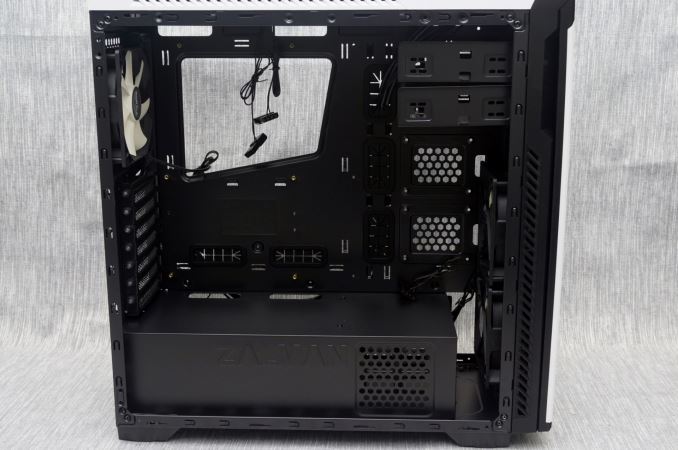

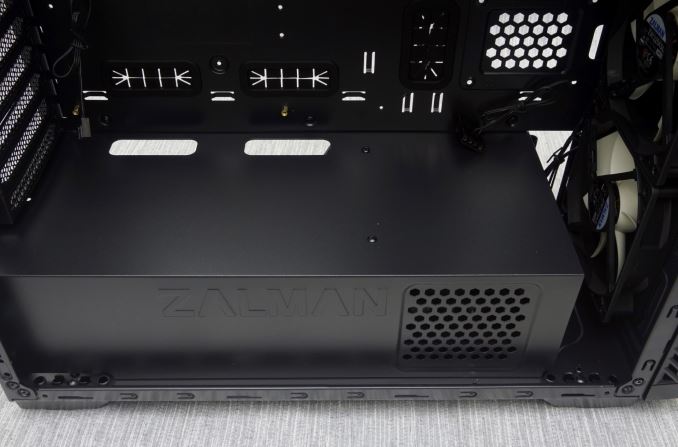
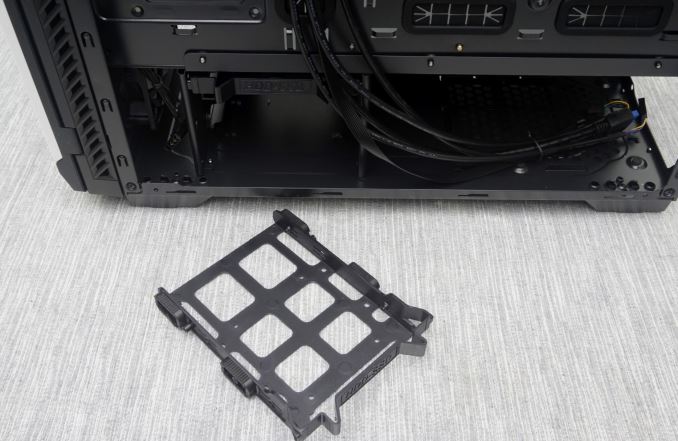
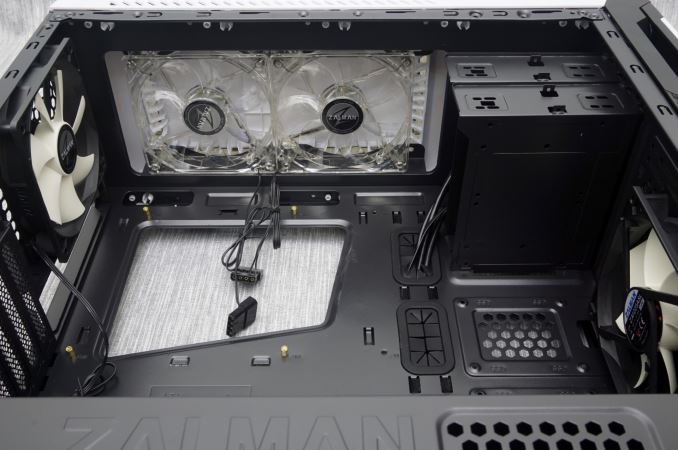
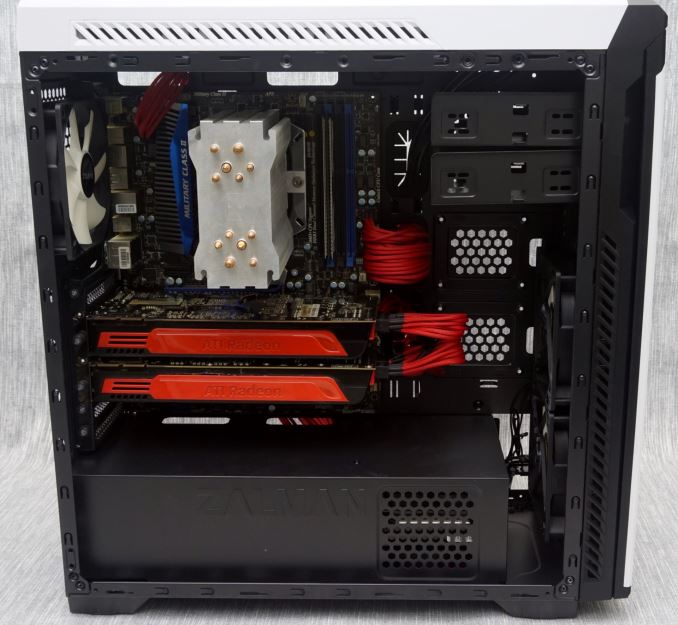
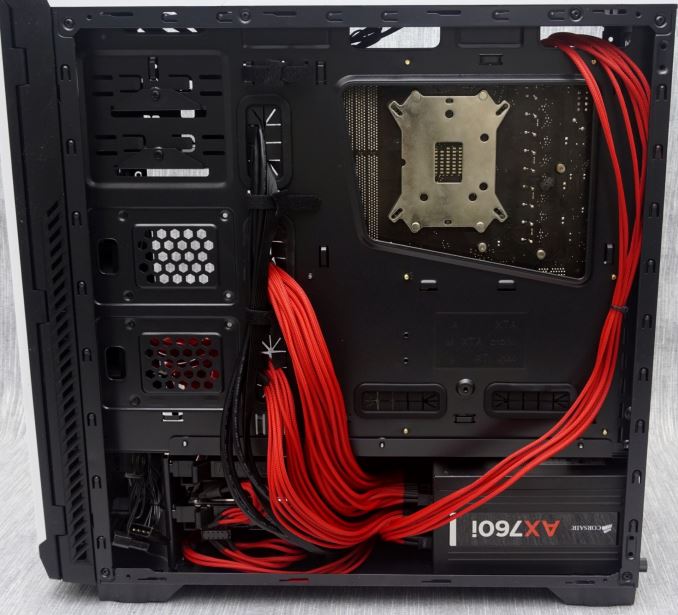








30 Comments
View All Comments
Azethoth - Monday, May 23, 2016 - link
I still buy a big case so I can have a bunch of 200mm fans. Big and slow = quiet but good cooling. It is pretty empty in there these days though. Although 64gb of 2800 RAM sure made that empty feeling go away quickly once the lid closed.vpr - Sunday, May 29, 2016 - link
Pre-Note: I do not work for this company, just been following their progress a lot.The Kimera Industries Cerberus might be what you're looking for - http://www.kimeraindustries.com/#main-hero
They had a Kickstarter which failed, but that opened up some new opportunities. According to their forums which I've kept up with they're working out some final details before signing the paperwork and announcing the details as to what's happening next.
There's even talks of a possible ATX variant which looks incredibly small for what it offers.
The problem is part selection though more so than case selection. It's a chicken and egg problem though as power users don't support mATX because the options are lacking, yet manufactures don't put a lot of money into mATX because the power users aren't interested.
Impulses - Friday, May 20, 2016 - link
I'd argue that people jamming 4-5 drives into their case is faster than SLI at this point, yet every ATX case seems destined to have room for lots of drives...I'd love to see a slimmer ST Raven or Corsair Air 540 would, lose the drive cages but keep the straight airflow and room for enthusiast SLI/water configs.
There's still a lot of unexplored ATX form factors IMO.
erple2 - Friday, May 20, 2016 - link
I didn't realize that anyone made PCIe soundcard anymore, other than for some specialized applications, and sli/xfire hasn't really been worth the hassle IMO. Now that m.2 is pretty standard, I'm not sure what a PCIe SSD buys you anymore. I'd like a mATX case that didn't stink. My big storage is in another box attached via Ethernet, so having 5 drives in my case is too much hassle. mATX still has full features mobos (4 ram slots, at least two PCIe slots), so that's all the expandability that I need or want. And I expect that the vast majority of people agree. It pains me when people buy a giant Dell box in ATX size, using iGPU. I think I've said enough.Azethoth - Monday, May 23, 2016 - link
I grew up on sound cards in my builds. But 5 or 10 years ago I got two useless sound cards in a row. Turns out MS changed windows sound and made those guys obsolete. Then some new sound guys came out with high end cards and op amps, whatever that is etc. Lack of driver support made me finally spit on them and now I just enjoy the built in ROG sound on the MB.Azethoth - Monday, May 23, 2016 - link
Oh yeah, and who cares about sound cards when it's just a digital stream going straight to your computer's surround receiver. The new sound algorithms track individual sounds through the 3d geometry which kind of means sound belongs in the GPU anyways.Murloc - Saturday, May 21, 2016 - link
what's the point of SLI support if you're not using it?It's not something most people ever use anyway.
I've never owned a mobo bigger than mATX and I'm an average value-for-money gamer, and I didn't do it on purpose.
My case supports ATX motherboards but I don't need them when I'm aiming for the cheapest motherboard that has what I need (the chipset).
For a media PC I'd go with mITX.
PCIe SSDs are a rarity, PCIe sound cards are either for obscure use cases or for noobs, real speakers need an external amplifier anyway, and AVRs can get digital audio through HDMI and do processing themselves with Audissey and all that jazz, which a consumer sound card will never do (idk about specialized uses).
JoeyJoJo123 - Wednesday, May 25, 2016 - link
And for the average gaming PC build (which is the use-case most enthusiasts who bother to build a PC have) you see nothing more than a single GPU in the PCI-E slots, and usually less than 4 SATA drives.The usual difference between MicroATX and ATX is that one has 4 PCI-E slots and the latter has space for 5, 6, sometimes 7 slots, and ATX usually has ~2 more SATA ports, although it's still really common to find MicroATX boards these days with the standard 6 SATA ports.
You can still do Crossfire/SLI with a MicroATX.
You can still have an array of disks with MicroATX.
MiniITX's real problem is that most people don't understand the form factor and think it's a limitation rather than a freedom of case choice and additional form-factors and sizes. Additionally, for first-time builders, small MiniITX cases are incredibly difficult builds, due to stressful cable management issues, and the order you install items in the case actually REALLY matters, because otherwise, everything just won't go in right.
techxx - Sunday, May 22, 2016 - link
I think a lot of consumers are just uneducated on how legacy and obsolete ATX has been for the past few years. Like someone else said, I'd bet only 1-3% of consumers need anything more than ITX. SLI/Crossfire has never really been worth it and the needs for expansion cards is virtually non-existent.ninjaquick - Sunday, May 22, 2016 - link
I use 5 slots on my motherboard for legacy hardware, but otherwise agree that most users don't need larger than mATX. That said, it doesn't cost much more to build a low cost full atx case, and doing so widens the market a brand can reach, which is critical for the low margin low end.